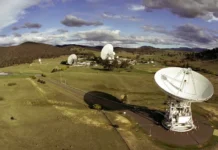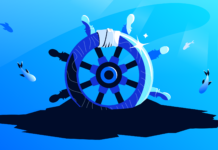Meet the Medal-Winners in SA’s Wildlife Olympics
In an event that has captured the curiosity and admiration of people around the globe, South Australia (SA) has recently held its very own Wildlife Olympics, a competition celebrating the unique and extraordinary abilities of the region’s diverse animal inhabitants. This imaginative event, which has been trending on Google search today, shines a spotlight on the incredible talents of Australia’s native wildlife, showcasing their prowess in various categories akin to Olympic sports. For more details, you can refer to this news here.
Unveiling the Medalists
The Wildlife Olympics is a creative way to engage the public with the natural world, celebrating the unique physical and behavioral traits of animals that make them champions in their own right. Let’s take a look at some of the standout medalists from this fascinating event.
Gold Medal: The Peregrine Falcon
In the category of speed, the Peregrine Falcon soared above the competition, securing the gold medal. Known as the fastest bird in the world, this raptor can reach speeds of over 320 kilometers per hour (200 miles per hour) during its hunting stoop (high-speed dive). This remarkable speed is facilitated by its aerodynamic body shape and powerful flight muscles, making it the undisputed champion of aerial velocity.
Silver Medal: The Eastern Grey Kangaroo
Jumping to the silver medal is the Eastern Grey Kangaroo, renowned for its impressive leaping abilities. These kangaroos can cover distances of up to 9 meters (30 feet) in a single bound and reach speeds of 56 kilometers per hour (35 miles per hour). Their powerful hind legs, large feet, and elastic tendons facilitate this extraordinary jumping capacity, allowing them to traverse vast landscapes with ease.
Bronze Medal: The Platypus
Earning the bronze medal is the Platypus, an animal that excels in the category of aquatic agility. This semi-aquatic mammal is adept at maneuvering through water, thanks to its webbed feet and streamlined body. The Platypus can stay submerged for up to two minutes and uses its sensitive bill to detect prey in the murky depths of rivers and streams, demonstrating remarkable adaptation to its aquatic environment.
The Purpose Behind the Event
The Wildlife Olympics is more than just a fun competition. It serves a critical educational purpose by raising awareness about the unique characteristics and survival strategies of South Australia’s native species. By highlighting the incredible abilities of these animals, the event aims to foster a deeper appreciation for biodiversity and the importance of wildlife conservation.
Reactions and Reviews
The Wildlife Olympics has garnered widespread attention and acclaim from animal lovers, environmentalists, and the general public. Social media platforms are abuzz with positive reactions, with many users expressing their newfound admiration for the featured animals. One Twitter user commented, "I never knew the Peregrine Falcon was so fast! This Wildlife Olympics is a fantastic way to learn about our amazing native animals."
Additional Information
The event is part of a broader initiative by the South Australian Department for Environment and Water, which regularly undertakes projects to protect and promote the region’s natural heritage. The Wildlife Olympics is just one example of their innovative approach to conservation education.
Why It Matters
Understanding and appreciating the unique traits of wildlife is crucial for their conservation. Events like the Wildlife Olympics help demystify the natural world, making it more accessible and engaging for the public. By learning about the incredible capabilities of animals, people are more likely to support efforts to protect their habitats and ensure their survival.
Good to Know
- Peregrine Falcon: Aside from its speed, the Peregrine Falcon is also known for its remarkable eyesight, which is about eight times sharper than that of a human.
- Eastern Grey Kangaroo: These kangaroos are highly social animals and often form groups called "mobs," which provide protection and social interaction.
- Platypus: The Platypus is one of the few venomous mammals. Males have a spur on their hind foot that can deliver a painful venom capable of causing severe pain to humans.
Looking Ahead
The success of the Wildlife Olympics suggests that there could be future editions of this imaginative event, potentially featuring new categories and more amazing animals. It’s a wonderful example of how creativity can be used to promote environmental education and conservation.
Conclusion
The Wildlife Olympics in South Australia has not only entertained but also educated the public about the remarkable abilities of native wildlife. By celebrating these natural athletes, the event has highlighted the importance of biodiversity and the need to protect our planet’s precious species. For more information, you can refer to this news here.
This trend, currently topping Google searches, reflects a growing interest in environmental issues and the fascinating world of wildlife. As we continue to learn and marvel at the natural world, events like the Wildlife Olympics remind us of the incredible diversity and wonder that our planet has to offer.


































